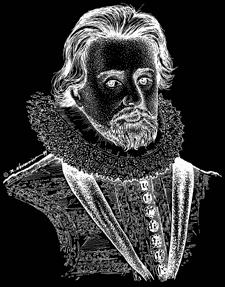










Constantine became emperor of Rome in 312 A.D. A little later he supposedly embraced the Christian faith for himself and for his empire, in an attempt to bring about the amalgamation of PAGANISM and CHRISTIANITY.
|
|
In 331 AD, Emperor Contantine ordered that an "ecumenical Bible" be written. Constantine wanted a Bible which would be acceptable to pagans as well as Christians, and Eusebius (the Bishop of Caesaria and a follower of Origen) was assigned to direct this task. Eusebius rejected the deity of Christ and claimed that Christ was a created being. This error, called the Arian heresy, is taught by the Roman Catholic Church. (Want proof? The pope has declared the Vulgate as the "infallilble Bible" and the Vulgate is Arian, since it removes the diety of Christ.) In any event, Eusebius, being a devout student of Origen's work, gladly obliged Emperor Constantine's request, and sent him manuscripts filled with Alexandrian corruption. There were about 50 copies of this bible made by Eusebius, and they ended up in Rome and Alexandria, where there was a very large occult presence. Since the attacks on the word of God had originated in Alexandria (with the deceitful work of such pagan Greek "scholars" as Origen and Clement of Alexandria), it was only fitting for some of Constantine's bibles to end up there. |
Both admirers and enemies of codices Vaticanus and Sinaiticus readily admit that these two codices are remarkably similar, so similar as to compel one to believe that they were of common origin. Dr. Gregory, a recent scholar in the field of manuscripts, believes that the Vatican and Sinai manuscripts are 2 of Constantine's 50 bibles. He states, "This Manuscript (Vaticanus) is supposed, as we have seen, to have come from the same place as the Sinaitic Manuscript. I have said that these two show connections with each other, and that they would suit very well as a pair of the fifty manuscripts written at Caesarea for Constantine the Great" (Dr. Gregory, The Canon and Text of the NT, p. 345). Also, in his Introduction to Textual Criticism of the NT, Dr. A.T. Robertson states, "Constantine himself ordered fifty Greek Bibles from Eusebius, Bishop of Caesarea, for the churches of Constantinople. It is quite possible that Aleph (Sinai) and B (Vatican) are two of these fifty."
But please remember -- the early Christians REJECTED these manuscripts. So, they went into secret libaries…and there they lay…until they were later dug up as "ancient manuscripts."
So here's what likely happened: the corrupt Alexandrian text (also called the "Egyptian" or "Hesychian" type text) found it's way into Constantine's bible (via Origen and Eusebius), one of which was the Vatican manuscript and another of which was the Sinai manuscript, but they were rejected and "thrown in the closet" by Christians of that day. However, after hundreds of years, they eventually were revived via the Westcott and Hort Greek Text, and finally crept into the new "Bible" versions in your local "Christian" bookstore.
The Devil is sneaky, isn't he??
Therefore, when you hear or read of someone "correcting" the King James Bible with "older" or "more authoritative" manuscripts, you are simply hearing someone trying to use a corrupted, pagan, gnostic, ecumenical, Roman Catholic text to overthrow the God-honored text of the Protestant Reformation and the great revivals.
Home
Does it Really
Matter?
Manuscripts
Codex
Sinaiticus
Codex
Vaticanus
Textus
Receptus
Westcott
& Hort
Is Older
Better?
Other Translations
Altered
Verses
Constantine
Origen
Tischendorf
Catholics & the Jesuits
![]()
![]()
